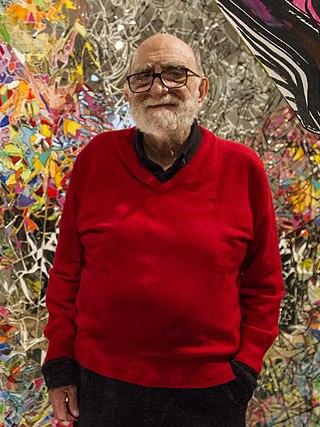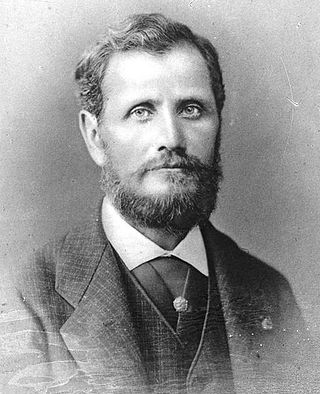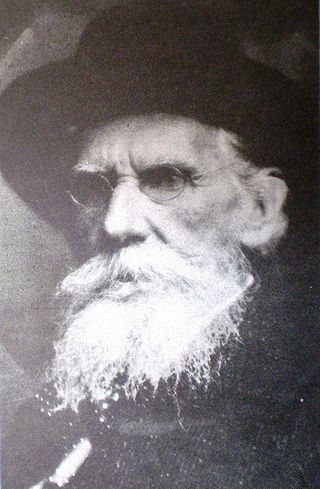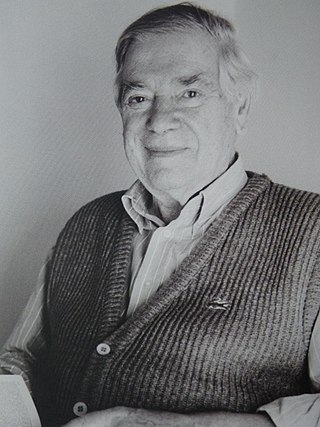This article needs additional citations for verification .(October 2016) |

Maurycy Minkowski (1881/82, Warsaw - 23 November 1930, Buenos Aires) was a Polish painter of Jewish ancestry, best known for his genre scenes of daily life in the shtetls.
This article needs additional citations for verification .(October 2016) |

Maurycy Minkowski (1881/82, Warsaw - 23 November 1930, Buenos Aires) was a Polish painter of Jewish ancestry, best known for his genre scenes of daily life in the shtetls.

He was born to a wealthy family. An illness he had when he was a small child left him deaf and without speech. [1] At the age of seven, he entered the "Institute for the Deaf " and showed an early talent for drawing, which encouraged his parents to pay for private lessons. In 1901, he began his formal studies at the Kraków Academy of Fine Arts, where he was a student of Józef Mehoffer, Jan Stanisławski and Leon Wyczółkowski. [1] He graduated in 1905 with a gold medal.
Having been informed of the pogroms taking place in Odessa, he went there to document the events with a series of drawings. [1] After that, he made a study trip through Germany and Austria and returned to Warsaw. He stayed for only a short time however, then went to Paris in 1908, where he got married and decided to settle permanently, although he frequently went back to Poland to participate in open-air painting workshops in Kazimierz Dolny, Sniatyn and Kraśnik. His paintings were exhibited in Vilnius and Łódź, as well as at the Zachęta. [1]
In early November 1930, he went to Argentina to help prepare the first overseas exhibition of his paintings. Later that month, unable to hear the honking of an oncoming taxi, he was struck and killed. The exhibition was presented as a posthumous tribute to his work, under the aegis of the Jewish Association of Argentina. In 1931, a committee was established to raise funds for the purchase of his works.
In 1942, a great majority of his works were auctioned off. Most were purchased by the "Fundación IWO" (the Argentine branch of YIVO) and were stored at the Asociación Mutual Israelita Argentina. A few of the paintings were destroyed and many suffered some degree of damage in 1994, when the building was destroyed by a car-bomb, killing 85 people. The surviving paintings were exhibited at the Eduardo Sívori Museum in 2011. [2]

Józef Marian Chełmoński was a Polish painter of the realist school with roots in the historical and social context of the late Romantic period in partitioned Poland. He is famous for monumental paintings now at the Sukiennice National Art Gallery in Kraków and at the MNW in Warsaw.

Maurycy Gottlieb(Polish pronunciation ; 21/28 February 1856 – 17 July 1879) was a Polish realist painter of the Romantic period. Considered one of the most talented students of Jan Matejko, Gottllieb died at the age of 23.

Raúl Soldi was an Argentine painter and production designer whose work treated various subjects, including landscapes, portraits, the theater and the circus, and nature. His theatrical figures are renowned for their melancholy appearance. He also illustrated poetry books.

Zwi Migdal was an organized-crime group by Polish Jewish individuals, founded in Poland and based mainly in Argentina, that trafficked in Jewish women from Central Europe for sexual slavery and forced prostitution.

Luis Felipe Noé is an Argentine artist, writer, intellectual and teacher. He is known in his home country as Yuyo. In 1961 he formed Otra Figuración with three other Argentine artists. Their eponymous exhibition and subsequent work greatly influenced the Neofiguration movement. After the group disbanded, Noé relocated to New York City where he painted and showed assemblages that stretched the boundaries of the canvas.

Stanisław Chlebowski (1835–1884) was a Polish painter with Russian and Turkish connections. He was a renowned specialist in Oriental themes.

Eduardo Sívori was an Argentine artist widely regarded as his country's first realist painter.
Ernesto de la Cárcova y Arrotea was an Argentine painter of the Realist school.

José Moreno Carbonero was a Spanish painter and decorator. A prominent member of the Málaga School of Painting, he is considered one of the last great history painters of the 19th century. He was a celebrated portrait painter who enjoyed the patronage of Madrid's high society. He also created genre scenes and some landscapes, vedutas and still lifes.

Carlos Alonso is an Argentine contemporary painter, draftsman and printmaker. Though he was a Social realist in his early career, he is best known as a New realist. Beef is a common element in his work.

The Eduardo Sívori Museum is a municipal art museum in Buenos Aires, Argentina.

Leopoldo Presas (1915-2009) was an Argentine artist. He experienced different styles throughout his life. He had academic training and started as a figurative painter though he later turned into expressionism as well. He tried several mediums as oil, tempera, charcoal and pencil on different supports including canvas, paper, paperboard and newspaper. The themes of his works have been very extensive. The female figure was his main attraction, but he also did still lifes, landscapes, harbors, erotic paintings and some expressionist and controversial series as “The Pigs”, “The Kings of Putrefaction” and “The Christs”. He won the Konex Award in 1982 and 2012.

Julio Barragán was an Argentine painter of the Concretist and Cubist schools.
Aquiles Badi (1894–1976) was twentieth-century Argentine painter. He was born in Buenos Aires on April 14, 1894, and died in that same city on May 8, 1976.

Maurycy Trębacz was one of the most popular Jewish painters in Poland in the late 19th and early 20th century. Many of his paintings were lost in the Holocaust, but a representative selection of his artwork survived. Trębacz died of starvation in the Litzmannstadt Ghetto during the Nazi German occupation of Poland.

Atilio Malinverno was an Argentine painter. He was a post-Impressionist, a part of a movement started in the first year of the 20th century.

Ángel Della Valle was an Argentinian painter in the Realistic style who belonged to the "Generation of '80"

Gela Seksztajn was a Polish-Jewish artist and painter. She is known mostly for her portraits and other paintings hidden within the Ringelblum Archive, in the Warsaw Ghetto during the Holocaust. The paintings were found after the end of World War II, and are now held mostly in the archive of the Jewish Historical Institute, in Warsaw, Poland.

Julia Wernicke was a painter and engraver from Argentina. She is known as the first animalist painter from Argentina, and was unique at the time in incorporating exotic animals into her paintings. She paved the way for female artists in Argentina through many firsts, especially within the discipline of engraving. Wernicke was one of the first women to have an individual exhibition of works in Buenos Aires, in 1897; and the first person to have an individual exhibition of engraved etchings in Argentina, in 1909.

Sławomir Ratajski is a Polish painter and diplomat.